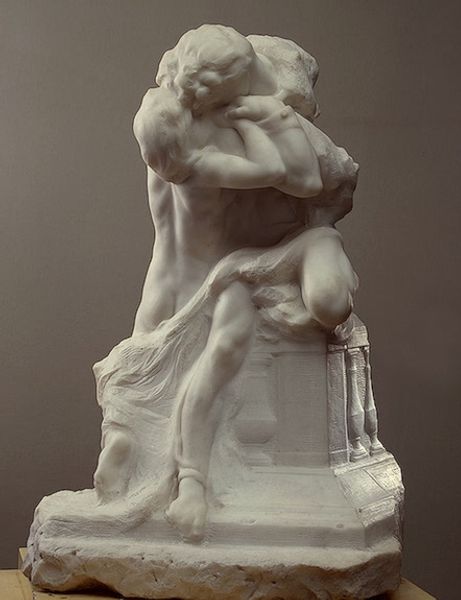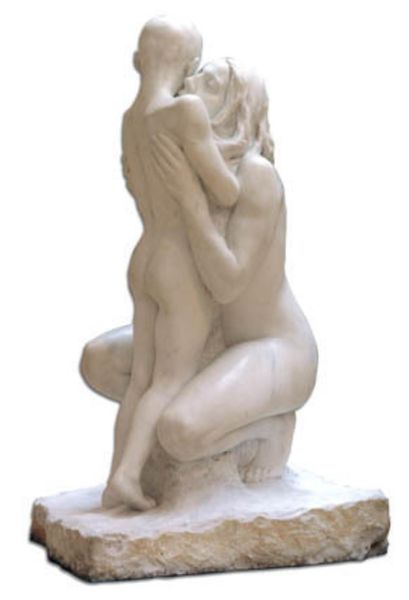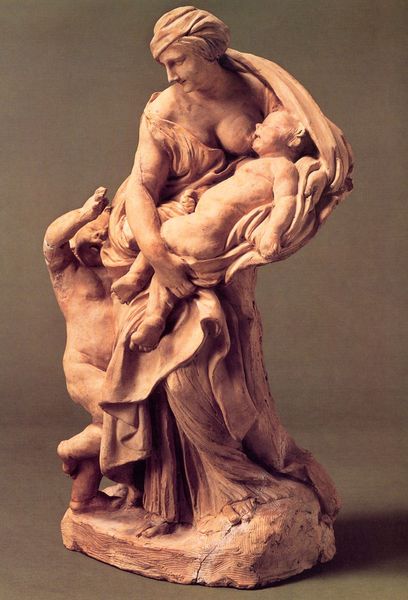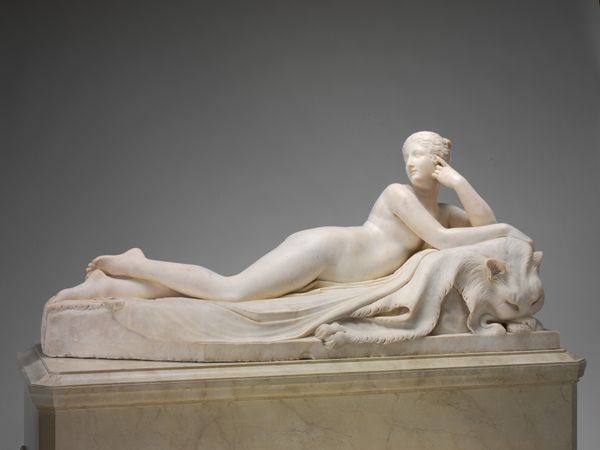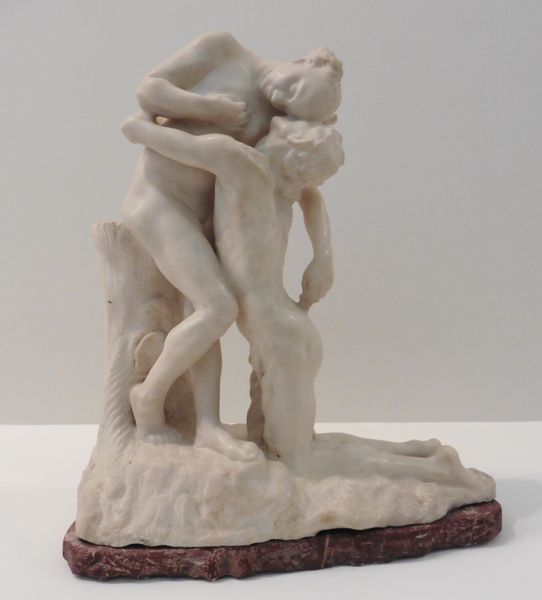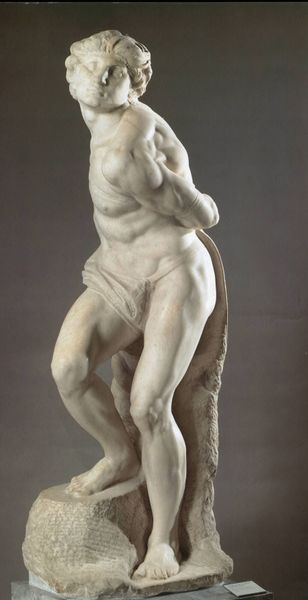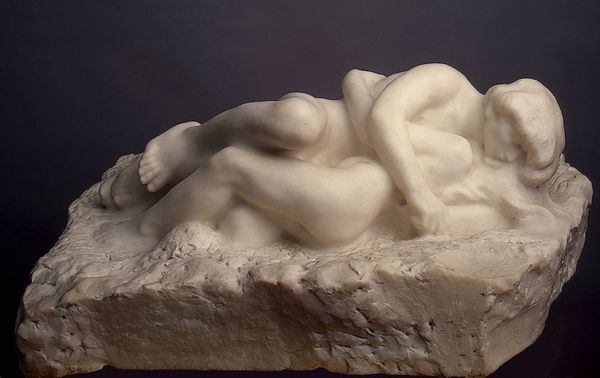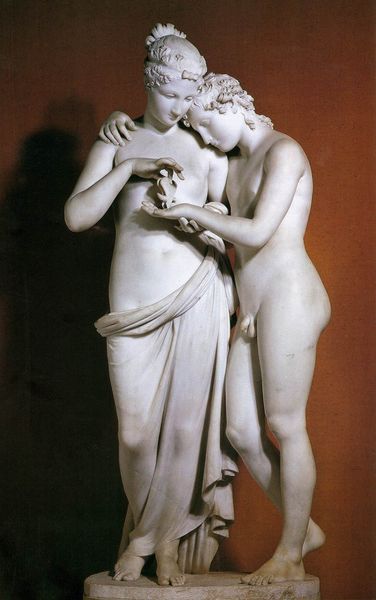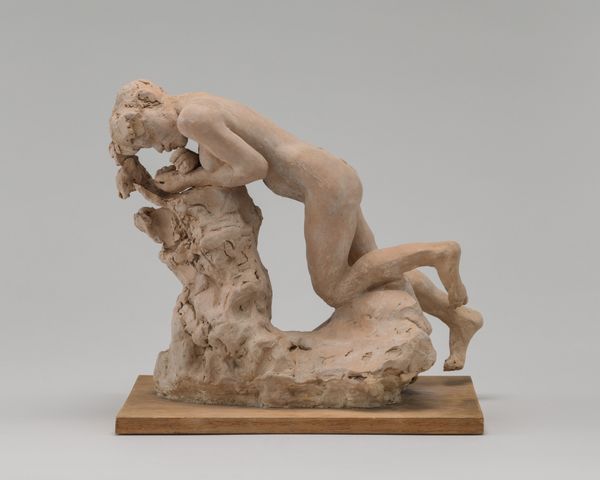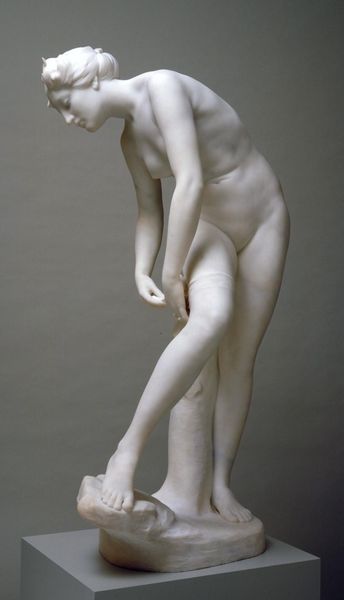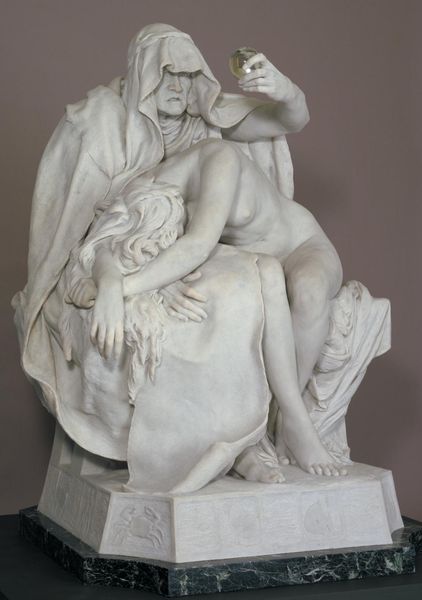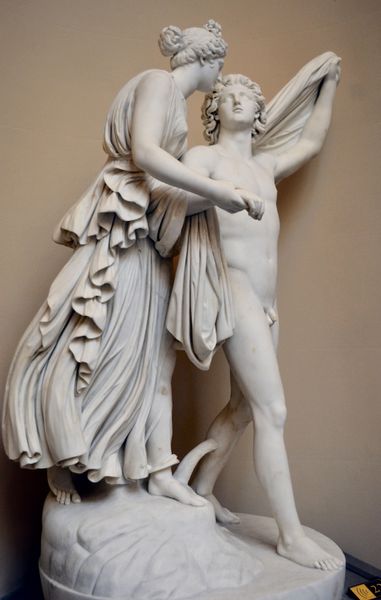
Copyright: Cornelia Parker,Fair Use
Editor: This is Cornelia Parker’s "The Distance (A Kiss With Strings Attached)," created in 2003. It’s a mixed-media sculpture that uses carving, marble, and… strings. What strikes me is how these seemingly fragile strings contrast with the permanence implied by the carved marble of the embracing figures. How do you interpret this work? Curator: It's intriguing to see Parker engage with Romantic tropes, isn't it? Here we have the classic image of a lovers' embrace, rendered in a medium associated with permanence, power, and canonical Western art. But then she disrupts it. These strings could represent the unseen forces – social expectations, power dynamics, perhaps even institutional frameworks – that both bind and distort relationships. The title "A Kiss With Strings Attached" explicitly points to this tension. Editor: So, the strings aren't just decorative; they’re integral to understanding the work's social commentary? Is she suggesting that no relationship exists in a vacuum? Curator: Precisely. And it's interesting that the strings partially obscure the figures, preventing us from fully accessing the idealized romantic image we might expect. They introduce a sense of unease, making us consider what is hidden or repressed within this intimate moment. Think about how museums display and frame such classical sculptures—do they also "tie" them to certain narratives? Editor: That's fascinating. It makes me think about how much context shapes our interpretation of even the most seemingly straightforward images. I appreciate how Parker prompts us to question those frameworks. Curator: Indeed. Parker has really layered her commentary by utilizing both the historical weight of classical statuary and the contemporary associations of mass-produced string. Art exists within institutions and social contexts, and this piece lays that bare. Editor: I see the piece differently now, realizing it's about a dialogue with art history but also with current society. Thank you!
Comments
No comments
Be the first to comment and join the conversation on the ultimate creative platform.

